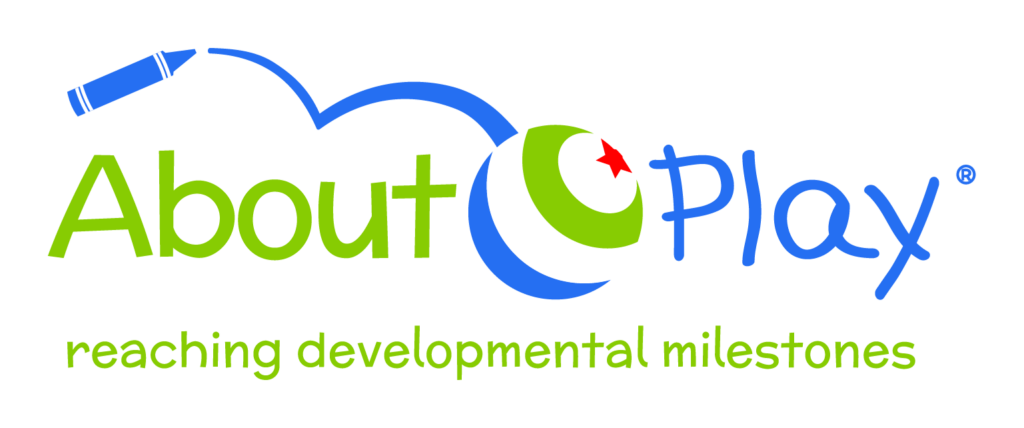Blog

Early Signs of Down Syndrome
Wondering if your child might have a developmental delay can be scary. In some cases, Down syndrome can be detected before birth, but that’s not always the case. Let’s discuss the early signs of Down syndrome and how to best support your child.
What Is Down Syndrome?
Down syndrome is a condition in which a person has an extra chromosome. Chromosomes are often described as small “packages” of genes inside the body. These chromosomes determine how a baby’s body forms and develops during pregnancy and after birth.
Typically, babies are born with 46 chromosomes. Babies born with Down syndrome have an extra copy of one of these chromosomes – Chromosome 21. The medical term for having an extra copy of a chromosome is called “trisomy.” Therefore, Down syndrome is also referred to as Trisomy 21.
Having an extra copy of Chromosome 21 will affect how the baby’s body and brain develop, resulting in mental and physical challenges. Although people with Down syndrome can be very similar in many ways, each individual has varying abilities and different IQs (typically, people with Down syndrome have an IQ between 30 and 70).
What Are the Early Signs & Symptoms of Down Syndrome?
The first indication that a baby might have Down syndrome can happen during routine prenatal testing. A blood test called the “quadruple screen” detects elevated levels of substances that can indicate Down syndrome. This is an adequate first step but isn’t used for a definitive diagnosis.
Amniocentesis sampling will be recommended to confirm the diagnosis of Down syndrome in utero. During this process, cells will be taken from amniotic fluid and tested.
Visible Signs of Down Syndrome in Utero
During ultrasounds, physicians can look for visible signs that could be possible signs of Down syndrome. Examples of these indicators include:
- Excess skin in the back of the neck
- Shorter than average femurs
- Missing nose bone
Visible Signs of Down Syndrome After Birth
People with Down syndrome share a collection of recognizable facial and physical features. These indicators can appear at birth and often become more pronounced with time.
Some common physical features of Down syndrome include:
- Flattened face, especially on the nose
- Almond-shaped eyes, usually slanting upwards
- An oversized tongue that may protrude from the mouth
- Shortened neck
- Small ears
- Small hands and feet
- Tiny white spots on the iris of the eye
- Poor muscle tone or loose joints
- Shorter than average height
- A single line across the palm of the hand (palmar crease)
Signs of Down Syndrome in Developmental Delays
Individuals with Down syndrome will have some degree of intellectual disability or developmental delay. They might learn more slowly than children their age and can have difficulty with complex reasoning and judgment.
Some of the common developmental delays associated with Down syndrome include:
- Slow development of motor skills – Delays in reaching milestones such as walking, talking, etc.
- Difficulty with expressive language, grammar, and speech clarity – Slow to master sentence structure and grammar, delayed language comprehension, inability to express their needs, etc.
- Lack of number skills – Most children with Down syndrome find it harder to master number skills than reading skills.
How Can You Treat Down Syndrome?
Down syndrome isn’t a health condition you can cure. Therefore, the goal of treatment is to assist with the physical, medical, developmental, and intellectual challenges that people with Down syndrome face throughout their lives. Options for treatment range from early intervention to medications to surgeries.
Early Intervention for Down Syndrome
One of the best ways to help a child with Down syndrome is to start early intervention as soon as possible. The sooner they receive individualized care and attention to address their specific health and developmental issues, the more likely they will reach their full potential.
Early intervention (EI) is a systematic program of therapy, exercises, and activities designed to address developmental delays in children. Types of EI for children with Down syndrome include three types of treatment:
- Physical Therapy – Helps develop muscle tone and strength, teaches how to move bodies appropriately to assist with daily functioning, diminish poor posture, etc.
- Speech Therapy – Learn how to overcome obstacles associated with Down syndrome that affect speech, including oversized tongues, low muscle tone, communication, etc.
- Occupational Therapy – Assists children in learning how to be as independent as possible and perform self-sufficient daily activities, such as dressing, feeding, playing, etc.
About Play Is Here To Help
Having a child with Down syndrome can present many challenges for parents. It’s important to know that you’re not alone when facing these challenges, and there are many things you can do to help ensure positive outcomes in your child’s life.
If your child has Down Syndrome, enrolling them in early intervention services can make all the difference in their learning and development. At About Play, our early intervention specialistshave extensive experience working with some amazing children with Down Syndrome, and we’d be happy to walk you through our process. Give us a call or contact us online today.




